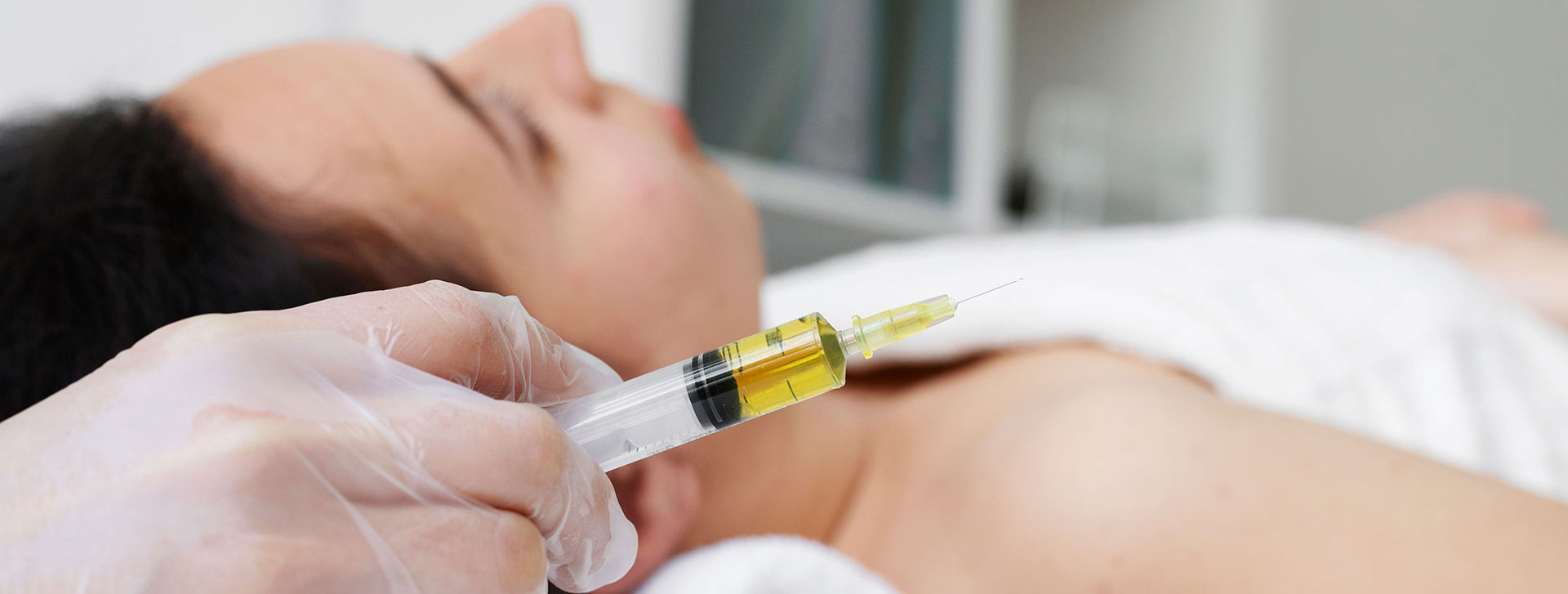Healthy Life

Neural therapy is a regulatory treatment method in which local anesthetics are injected into specific areas of the body.
Procaine is the preferred local anesthetic drug due to its short duration of action and positive effect on tissue perfusion, the latter likely stemming from its metabolites (para-aminobenzoic acid and diethylaminoethanol). The anti-inflammatory effect of local anesthetics was recently discovered (Hollmann & Durieux 2000). This anti-inflammatory effect is independent of the sodium channel effect of local anesthetics.
The effects of local anesthetics last much longer than the anesthesia they induce. This may be one of the most important explanations for the therapeutic properties of local anesthetics. This mechanism also explains their relaxing effect on muscle trigger points (Heine 2006). Additionally, local anesthetics reduce neurogenic inflammation by affecting neurotransmitters (Tracey 2009; Oke & Tracey 2009).
The primary goal of this technique is not merely to provide local anesthesia. Neural therapy utilizes the regulatory mechanisms and plasticity properties of the nervous system. Creating targeted mechanical stimuli (through needles) and selectively eliminating other stimuli (through local anesthetics) affect both the organization of the nervous system and tissue perfusion, thereby disrupting the positive feedback actions in a pain cycle involving a complex interaction of nociceptor activation, sympathetic stimulation, circulatory disorders, neurogenic inflammation, and muscle stiffness.
A reduction in perceived pain after the first session is a common observation in neural therapy and is considered a beneficial diagnostic indicator that the neural therapist should continue with additional sessions. The aim of subsequent sessions is to eliminate the mechanism contributing to the pain as mentioned above. In fact, repeated application of local anesthetics has been shown to directly reduce neurogenic inflammation.
Understanding the autonomic nervous system (ANS) is crucial to comprehending neural therapy. Outside the brain, the nervous system has two main divisions: the somatic nervous system and the autonomic nervous system. The somatic nervous system, which controls voluntary movements such as walking and talking, is familiar to most people. The autonomic nervous system, on the other hand, regulates internal body functions such as immune function, blood pressure and circulation, hormones, digestion, body temperature, heart rate, breathing, urination, sexual function, menstruation, and other automatic bodily functions. If the ANS is injured, these internal functions will not operate optimally, leading to illness and chronic pain.
Neural therapy is a healing technique developed in Germany that involves the injection of local anesthetics into autonomic nerve ganglia (nerve groupings), peripheral nerves, scars, glands, acupuncture points, trigger points, and other tissues. Practiced by two German doctors in the early 1900s, Ferdinand and Walter Huneke are considered the founders of neural therapy. It is one of the best-known natural healing methods in Germany, with over 5,000 practitioners. It is also currently practiced in other European countries and the United States.
Neural therapy is based on the theory that any trauma, infection, or surgery can damage the autonomic nervous system and cause long-term disturbances in the electrochemical or electromagnetic functions of tissues. If there is a disturbance in the autonomic nervous system, the resulting dysfunction can persist indefinitely unless repaired. When the autonomic nervous system is injured or does not function properly, various outcomes can occur. An example is the lack of synchronization between demand in an area needing it, like in a soft tissue injury, and blood flow, resulting in incomplete healing.
Several theories explain how and why neural therapy works. It can be better understood with a brief review of nerve cell physiology. Normal resting nerve cells have a "resting membrane potential," which is the difference in electrical charges between the inside and outside of the cell. At rest, a healthy nerve cell does not produce nerve impulses. In most neurons, this resting membrane potential is about 70 mV. When a stimulus is received by the cell, the membrane potential drops. At around 45 mV, an "action potential" is produced, and the nerve fires a signal. In a nerve cell damaged by surgery or trauma, the resting membrane potential is chronically low; for example, it might be 47 or 50 mV. This means the nerve will fire a signal with much less stimulation.
Although there are different theories about the mechanism of action of local anesthetics, it is well known that these substances increase the resting membrane potential and decrease the likelihood of the nerve firing a signal even with more stimulation. Additionally, studies with procaine have shown its ability to increase the refractory period (the time interval between nerve firings). Kidd summarizes: "A pathological decrease (often) or an increase (less frequently) in membrane resting potential in the affected tissue leads to a reduction in excitation threshold. This subthreshold, chronic low-grade stimulation causes impaired intracellular metabolism and ion exchange, and a persistent inability to maintain a normal resting potential, leading to chronic neurophysiological instability." Since local anesthetics have a short half-life, do they affect long-term change? It is believed that the gradual resumption of normal activity by ion pumps due to repeated seepage of the local anesthetic around the cell wall eventually leads to the proper functioning of the autonomic nervous system again.
Neural therapy is typically performed using local anesthetics like procaine or lidocaine. These anesthetics should never contain epinephrine.
Neural therapy is a regulatory treatment using local anesthetics. Corticosteroids are not used in neural therapy. The aim is to restore the structures impaired in various areas to normal and achieve long-term healing. As the factors causing pain are eliminated in neural therapy, the body's self-renewal system is activated. Thus, improvement and return to normal functions are achieved. Treatment is carried out in sessions, which can be applied 1-2 times a week. The treatment varies depending on the patient.